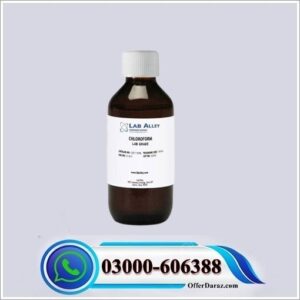Anesthesia Injection Price in Pakistan
Anesthesia Injection Price in Pakistan Anesthesia injection refers to the administration of anesthesia medications via injection for the purpose of inducing and maintaining anesthesia during surgical or medical procedures.
The goal of anesthesia injections is to achieve a state of unconsciousness, loss of sensation, and muscle relaxation. Allowing the patient to undergo surgical procedures without experiencing pain or discomfort. The type and dosage of anesthesia medications administered via injection are carefully selected based on factors such as the patient’s medical history, age, weight, and the type of surgery being performed.
There are different types of anesthesia injections used in clinical practice, including:
- Induction Agents: These medications are used to rapidly induce anesthesia and include drugs such as propofol, thiopental, etomidate, and ketamine. They are typically administered intravenously to quickly achieve unconsciousness.
- Maintenance Agents: Common maintenance agents include inhaled anesthetics (e.g., sevoflurane, desflurane, isoflurane) and intravenous agents (e.g., opioids, benzodiazepines, muscle relaxants).
- Local Anesthetics: Examples include lidocaine, bupivacaine, and ropivacaine.
Anesthesia Injection Benefits:
The administration of anesthesia via injection offers several benefits in medical practice, particularly in the context of surgical procedures. Some of the key benefits of anesthesia injections include:
- Rapid Onset: Anesthesia injections, particularly intravenous (IV) induction agents, often lead to rapid onset of anesthesia, allowing for quick induction of unconsciousness and loss of sensation. This enables surgical procedures to commence promptly, reducing waiting times and minimizing patient discomfort.
- Effective Pain Management: Anesthesia injections not only induce unconsciousness but also provide effective pain management during and after surgical procedures. Local anesthetics injected into specific areas of the body can block sensation, providing targeted pain relief and minimizing the need for additional analgesic medications.
- Smooth Recovery: Anesthesia injections, particularly when administered by skilled anesthesia providers, can lead to smooth emergence from anesthesia and postoperative recovery. Patients often experience minimal residual effects and a faster return to consciousness compared to other methods of anesthesia induction, facilitating a more comfortable recovery period.
- Reduced Risk of Nausea and Vomiting: This can contribute to improved patient satisfaction and a more pleasant postoperative experience.
- Minimized Respiratory Depression: Anesthesia injections, when appropriately dosed and monitored, can minimize the risk of respiratory depression compared to other forms of anesthesia induction, such as inhalation agents. This is particularly advantageous in patients with compromised respiratory function or preexisting respiratory conditions.
Anesthesia Injection Side Effects:
Some common side effects associated with anesthesia injections include:
- Respiratory Depression: Anesthesia injections, particularly opioids and certain sedatives, can suppress respiratory function, leading to shallow breathing, hypoventilation, or respiratory arrest. This risk is higher in patients with preexisting respiratory conditions, obesity, or those receiving high doses of anesthesia agents.
- Hypotension: Anesthesia injections, especially intravenous induction agents. May cause a drop in blood pressure (hypotension) due to vasodilation and myocardial depression. Hypotension can lead to reduced organ perfusion and tissue oxygenation. Potentially resulting in complications such as dizziness, lightheadedness, or cardiovascular collapse.
- Bradycardia or Tachycardia: Some anesthesia agents, such as opioids and certain sedatives, can affect cardiac conduction, leading to bradycardia (slow heart rate) or tachycardia (rapid heart rate). Cardiac arrhythmias may occur, particularly in patients with underlying cardiac disease or electrolyte imbalances.
- Nausea and Vomiting: Anesthesia injections, especially opioids and volatile anesthetics, may cause postoperative nausea and vomiting (PONV) in susceptible individuals. PONV can be distressing for patients and may delay recovery from anesthesia and surgery.
- Allergic Reactions: Rarely, patients may experience allergic reactions to anesthesia agents or other components of the injection. Leading to symptoms such as rash, itching, swelling, or anaphylaxis.
- Central Nervous System Effects: Some anesthesia agents, such as benzodiazepines and barbiturates. Can cause central nervous system (CNS) depression, leading to drowsiness, confusion, or delayed awakening from anesthesia. Patients may experience grogginess or cognitive impairment during the recovery period.
- Local Anesthetic Toxicity: Symptoms of local anesthetic toxicity may include seizures, cardiovascular collapse, and respiratory arrest.
Uses Anesthesia Injection Price in Pakistan:
Here are the primary uses of anesthesia injections:
- Maintenance of Anesthesia: This involves administering anesthetic agents continuously or intermittently to sustain unconsciousness, muscle relaxation, and analgesia. Maintenance agents may include IV opioids. Volatile anesthetics, benzodiazepines, and muscle relaxants, depending on the patient’s needs and the nature of the surgery.
- Analgesia: Anesthesia injections, particularly opioids and local anesthetics, are used to provide pain relief during and after surgical procedures. Local anesthetics, such as lidocaine or bupivacaine. Especially for procedures involving regional anesthesia or nerve blocks.
- Muscle Relaxation: NMBAs act at the neuromuscular junction to inhibit muscle contractions. Facilitating intubation, optimizing surgical conditions, and reducing the risk of intraoperative complications.





Reviews
There are no reviews yet.